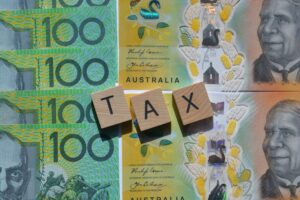AUD-USD Forecasts: Will The Aussie Dollar Recover In 2025?
![]() Ujjwal Maheshwari, September 20, 2024
Ujjwal Maheshwari, September 20, 2024
The Australian dollar (AUD) has long been subject to fluctuations driven by domestic economic conditions, global market forces, and geopolitical events. As we progress through 2025, investors, businesses, and policymakers are keen to understand whether the AUD will recover against the US dollar (USD).
In this article, we will take a closer look at the key drivers of the AUD-USD exchange rate, expert predictions, possible scenarios, and future implications for investors and businesses.
Current State of the AUD-USD Exchange Rate
As of March 2025, the Australian dollar is approximately 0.62 USD. This marks a decline from its previous highs, reflecting both domestic economic challenges and international pressures. Traders closely monitor the AUD-USD currency pair, analysing economic data, interest rates, and global market trends to predict future movements.
Factors Contributing to the Decline
The difference in interest rates between the Reserve Bank of Australia (RBA) and the US Federal Reserve is a key factor driving the decline of the AUD. When US interest rates rise faster than those in Australia, investors shift their capital to USD-denominated assets that offer better returns. This reduces demand for the Australian dollar, leading to its decline.
Another significant factor is commodity price volatility, particularly in iron ore and coal, which are Australia’s key exports. Australia’s economy heavily relies on these resources, and any fluctuations in global prices can impact the currency’s strength. Lower demand or falling prices for these commodities drag down the Australian dollar. The value of the Australian dollar is directly influenced by these global economic conditions.
Additionally, weaker global growth projections have affected risk-sensitive currencies like the AUD. When investors anticipate sluggish economic growth worldwide, they tend to move away from riskier assets, including the Australian dollar, and seek safer alternatives such as the US dollar, which is considered a safe currency.
Another major influence is the ongoing trade tensions between China, Australia’s largest trading partner, and other major economies. Any deterioration in Australia-China trade relations negatively affects Australia’s exports and overall economic stability, further weakening the currency.
Understanding these dynamics is crucial in assessing whether the AUD can mount a recovery in 2025 or continue experiencing depreciation. Factors such as fiscal policy, monetary decisions by central banks, and geopolitical risks will continue to play a role.
Historical Performance of the AUD-USD Exchange Rate
Historical performance analysis is crucial for assessing the possible future direction of the AUD-USD exchange rate. The Australian dollar has gone on a roller-coaster ride over the years as a result of economic conditions, global market trends, and monetary policies.
2011 Peak: Mining Boom and Strong Demand
In USD terms, the AUD hit an all-time high of 1.10 in 2011, driven by a mining boom and strong commodity demand from China. During this time, prices for iron ore and coal were high as China’s rapid industrialisation created robust demand for Australian exports. But these record highs were fleeting as the economic terrain began to change.
2013-2016 Decline: Slowdown in China and Falling Commodity Prices
The AUD suffered a strong fall in value between 2013 and 2016, dropping to 0.70-0.75 USD. A slowdown in China’s economy, along with a decline in iron ore prices, was a major factor in pressuring the currency. Since Australia’s economy is closely tied to China’s, any reduction in Chinese demand for raw materials can directly affect the Australian dollar’s value.
2019-2021 Volatility: Impact of the COVID-19 Pandemic
The AUD-USD exchange rate witnessed significant volatility during 2019 and 2021. When the COVID-19 pandemic first hit global markets, the Australian dollar even dipped below 0.60 USD before stabilising. However, as global economies began to recover, Australia’s economic policies encouraged the upturn, and the currency even managed to rise above 0.75 USD in 2021.
2022-2024 Bearish Trend: Rising US Interest Rates and Recession Fears
From 2022 to 2024, the AUD entered a bearish trend due to rising US interest rates and growing concerns over a potential global recession. The US Federal Reserve raised interest rates aggressively to stem its inflation, and US assets offered higher yields, attracting inflows but causing a stronger USD and weaker AUD. The Australian dollar was volatile during this period, ranging from 0.60 to 0.68 USD. Rate cuts by the Federal Reserve were a topic of debate, as traders speculated on their impact on the USD exchange rate.
Future Outlook: Can the AUD Recover in 2025?
Putting this history into context, we can better understand the current value of AUD-USD in 2025. Whether the Australian dollar can regain strength will depend on several factors, including future interest rate decisions by the RBA and the Federal Reserve, commodity market trends, global economic growth prospects, and trade relations between Australia and its key partners.
One of the key events shaping the currency market this year is the US presidential election. Political uncertainty can influence market sentiment, leading to fluctuations in major currencies like the US dollar and Australian dollar. Additionally, monetary policy decisions, including potential interest rate cuts by the Reserve Bank of Australia or the US Federal Reserve, will significantly impact the exchange rate.
Market participants are also closely watching inflation trends, economic data releases, and shifts in fiscal policy. The outlook for AUD-USD forecasts depends on global risk appetite, commodity prices, and investor sentiment toward the Aussie dollar. Traders will assess today’s range, keeping an eye on volatility and expected movements in the second quarter of 2025.
Factors Influencing the AUD-USD Exchange Rate in 2025
Australian dollar trading in 2025 is shaped by monetary policies, commodity prices, China’s economy, and global investor sentiment. Whether the AUD recovers or continues to underperform against the USD will depend on such factors.
Monetary Policy and Interest Rates
In early 2025, the Reserve Bank of Australia reduced the cash rate to 4.10% in support of economic growth amid weakening domestic demand. At the same time, the US Federal Reserve signalled the possibility of interest rate cuts later in the year. If the Fed lowers rates while the RBA remains at its current level, the narrowing interest rate gap would likely benefit the Australian dollar. However, any delays on the part of the US Fed in reducing rates could keep the US dollar strong, thus restricting the recovery of the Australian dollar.
Commodity Prices and Australia’s Trade Balance
As a top exporter of iron ore, coal, and natural gas, Australia’s economy depends heavily on commodity prices. Iron ore prices have remained volatile in the range of USD 90-120 per tonne. Increased demand, especially from China, would bolster the AUD, while falling prices would do the opposite. Australia is also looking for new markets as the world transitions to renewable energy, which is weighing on coal exports. Typically, this would support the AUD, given a strong trade surplus, but uncertainties related to global demand carry risks.
China’s Economic Growth
The demand from Australia’s largest trading partner, China, will significantly influence the AUD forecast. China’s GDP growth is expected to fall to 4.5-5.0% in 2025, and demand for Australian commodities may taper. Struggles in China’s property market continue, which could weigh further on iron ore demand. In contrast, easing trade tensions such as the removal of bans on Australian wine and beef may provide some relief for the AUD. Traders will also closely monitor expected policy changes and economic data from China to assess their impact on the Australian dollar.
Global Market Sentiment and Risk Appetite
The AUD is a risk-sensitive currency, benefiting from economic optimism and weakening during uncertainty. Geopolitical tensions, including the US-China trade row, may cause investors to flee to safety toward the safe-haven value of the USD, potentially keeping the AUD under pressure. If global investors are optimistic and markets rebound, demand for higher-yielding AUD assets will likely rise, supporting its recovery.
Expert Forecasts for AUD-USD in 2025
Financial institutions and analysts have varied predictions regarding the AUD/USD forecast in 2025, reflecting the uncertainty surrounding global economic conditions.
Westpac forecasts that the AUD will rise to 0.70 USD by mid-2025, citing improved global conditions and a potential narrowing of interest rate differentials. National Australia Bank (NAB) also predicts the AUD will trade in the range of 0.68-0.70 USD, driven by a stabilisation in interest rates. UBS anticipates short-term weakness for the AUD but expects a rebound to 0.67-0.68 USD by the end of the year. Meanwhile, the AUD may fluctuate between 0.60 USD and 0.64 USD throughout 2025, indicating continued volatility in the market.
Potential Scenarios for the AUD in 2025
In 2025, the performance of the Australian dollar will be shaped by global economic conditions, interest rate policies, inflows, and currency movements. Three scenarios detail its possible moves.
Optimistic Scenario: Strong Recovery
A stronger AUD recovery may occur if the US Federal Reserve reduces interest rates to support economic growth, weakening the USD and increasing investor confidence toward riskier assets. If China’s economy stabilises and demand for Australian commodities rises, it will further support the AUD. A neutral stance from the Reserve Bank of Australia (RBA) would prevent excessive depreciation. Under these conditions, the AUD/USD exchange rate is projected to reach 0.70 to 0.72 USD.
Pessimistic Scenario: Further Weakness
The AUD could weaken further if China’s economy slows, reducing demand for Australian exports. Global recession fears may lower risk appetite, strengthening the USD. If the RBA cuts rates more aggressively than expected, it would widen the interest rate gap with the US, putting additional pressure on the AUD. Geopolitical tensions could also drive investors toward the USD. In this scenario, the AUD/USD exchange rate could fall to 0.58 to 0.62 USD.
Stabilisation Scenario: Sideways Movement
A more balanced scenario would see the AUD trading within a stable range. Moderate global growth would support risk-sensitive currencies, while narrowing interest rate differentials between the RBA and Fed would limit volatility. Stable commodity prices would also help maintain the AUD’s position. In this case, the AUD/USD exchange rate would likely range between 0.63 to 0.67 USD.
What This Means for Investors and Businesses
For Investors
Currency volatility will continue to affect the AUD/USD pair, so risk management strategies such as hedging will be necessary for foreign exchange traders. Equity investors could be affected both ways, with a stronger AUD hurting Australian exporters but assisting businesses with exposure to imports. Investors in property need to monitor interest rate trends closely.
For Businesses
The impact of currency fluctuations will vary between industries. A weaker AUD would benefit exporters, making Australian goods and services more competitive in the international arena. Businesses that depend on imported goods would prefer a stronger AUD, as it would help lower their costs.
A weaker AUD may also bring positive results in tourism and education sectors, as it makes Australia comparatively cheaper for overseas tourists and students. Conversely, a stronger AUD would affect Australians’ overseas travel and study, making these experiences more expensive.
Conclusion
The AUD’s trajectory in 2025 remains uncertain, with multiple factors influencing its movement. While some analysts are optimistic about a recovery, risks remain in the form of global economic headwinds, China’s slowdown, and geopolitical instability.
Investors and businesses should stay informed and adaptable, as the currency markets remain highly reactive to economic and political developments. Whether the AUD recovers or continues its downward trend, strategic planning will be crucial in navigating the forex landscape in 2025.
Blog Categories
Get Our Top 5 ASX Stocks for FY25
Recent Posts
Cettire shares are down over 90% from their all time high as investors follow the leader in selling shares
It hasn’t been a good 14 months for Cettire shares. For a long time after the pandemic, eCommerce was one…
How will stocks be impacted by tariffs? Here are 6 victims on the ASX and how they’re responding
How will stocks be impacted by tariffs? Its a long story, but few stocks can say that there’ll be no…
The $3m super tax is coming! If you’re invested in equities, here is how it might impact you
It seems during the next 3 years, the $3m super tax will be officially a thing. Itwas blocked by the…


